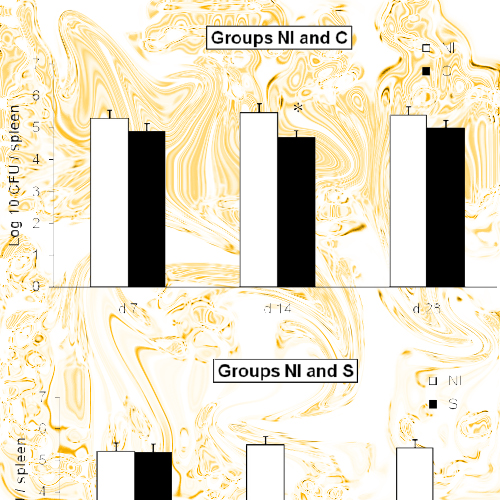Superior Protective Immunity against Murine Listeriosis by Combined Vaccination with CpG DNA and Recombinant Salmonella enterica Serovar Typhimurium
01-Dec-2009
Infection and Immunity, 2009, 77, 12, 5501 - 08 published on 01.12.2009
Infection and Immunity, online article
Infection and Immunity, online article
Preexisting antivector immunity can severely compromise the ability of Salmonella enterica serovar Typhimurium live vaccines to induce protective CD8 T-cell frequencies after type III secretion system-mediated heterologous protein translocation in orally immunized mice. To circumvent this problem, we injected CpG DNA admixed to the immunodominant p60217-225 peptide from Listeria monocytogenes subcutaneously into BALB/c mice and coadministered a p60-translocating Salmonella strain by the orogastric route. The distribution of tetramer-positive p60217-225-specific effector and memory CD8 T cells was analyzed by costaining of lymphocytes with CD62L and CD127. In contrast to the single oral application of recombinant Salmonella or single immunization with CpG and p60, in the spleens from mice immunized with a combination of both vaccine types a significantly higher level of p60-specific CD8 T cells with a predominance of the effector memory T-cell subset was detected. In vivo protection studies revealed that this CD8 T-cell population conferred sterile protective immunity against a lethal infection with L. monocytogenes. However, p60-specific central memory CD8 T cells induced by single vaccination with CpG and p60 were not able confer effective protection against rapidly replicating intracellular Listeria. In conclusion, we provide compelling evidence that the combination of Salmonella type III-mediated antigen delivery and CpG immunization is an attractive novel vaccination strategy to modulate CD8 differentiation patterns toward distinct antigen-specific T-cell subsets with favorable protective capacities.











